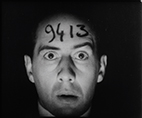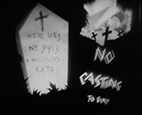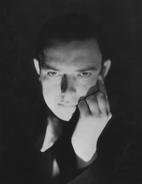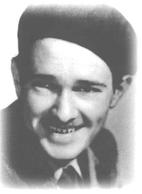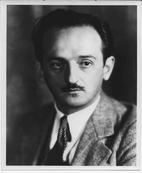The Life and Death of 9413 - A Hollywood Extra - Robert Florey, Slavko Vorkapich
- Unseen Cinema Collection |
- 1927 |
- 14 minutes |
- B&W |
- SOUND
Rental Format(s): Digital File
Co-makers: Robert Florey and Slavko Vorkapich
Camera: Greg Toland, Paul Ivano, Robert Florey, Slavko Vorkapich
Featuring Jules Raucourt, Voya George, Adriane Marsh, Slavko Vorkapich, Robert Florey
Original format: 35mm silent film 1.33:1
New music: Carlos Dominguez
Florey and Vorkapich's fictional short features an expressionistic design made almost exclusively with miniature sets and photographed with live actors through mirrors. An elliptical narrative concerns the plight of Hollywood extras, at the time much abused by producers. Supposedly made for $97, the film ran commercially in art houses. -Jan-Christopher Horak
Perhaps the most popular experimental film made in the United States prior to Deren's Meshes of the Afternoon, the film has direct ties to German expressionistic and French avant-garde cinema. The filmmakers fabricated much of the atmosphere through clever lighting and cutouts to depict the business of Hollywood. The production was made on a shoestring budget and shot mostly in a corner of Florey's kitchen and at several public locations in Los Angeles. The highly entertaining results received wide exposure at little art cinemas then in vogue across the country, and generated much discussion among the public and cinéphiles. Florey, Toland and Vorkapich went on to have exemplary Hollywood careers, each producing significant contributions to film art. Sadly the same can't be reported for its star Jules Raucourt, who like the film's namesake "9413" saw his acting career slowly unravel. -Bruce Posner
Robert Florey (1900-1979), French cinéaste, journalist, author and film and television director, came to Hollywood in 1921 and worked as an assistant director before collaborating on The Life and Death of 9413 - A Hollywood Extra. He made at least three other short experimental films and directed over 50 Hollywood features during the 1930-40s. In 1953, he moved to television. -Bruce Posner
Slavko Vorkapich (1892-1976), the Serbian-born artist, settled in Santa Barbara, California in 1925 as a portrait painter and by 1928, inspired by director Rex Ingram, entered Hollywood studios as a "montage" specialist. His name eventually became a noun describing the sequences for which he was famous. In later years, he made Pepsi commercials and lectured on principles of film art. -David Shepard
Cinematographer Gregg Toland (1904-1948) is acknowledged for his innovative use of fast lenses and creative lighting to record "deep-focus," great depths of field to hold sharp focus from close foreground to distant background. Between 1936-1942, he developed this technique in collaboration with directors John Ford, William Wyler and Orson Welles. -Bruce Posner


